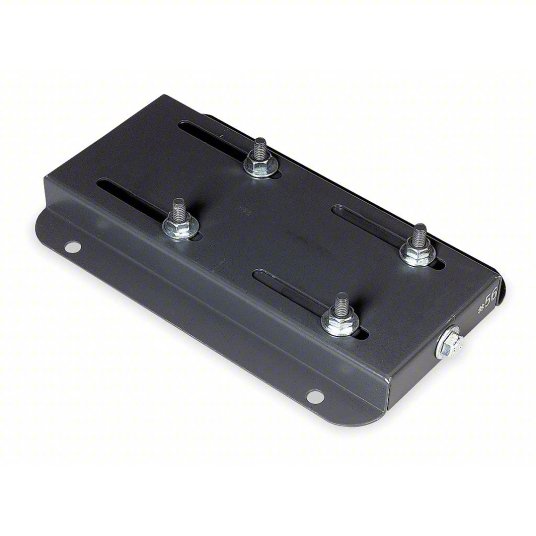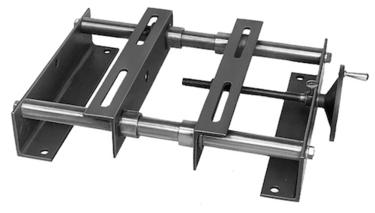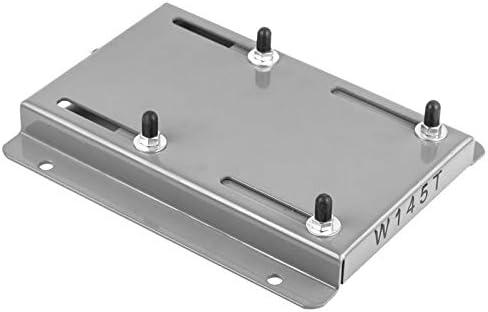Product Description
G003 Horizontal Slurry Pump Frame Base
Company Introduction
HangZhou CHINAMFG Pump Co., Ltd is a profeesional slurry pump and Slurry pump Spares manufacturer of above 20 years’ experience, design, development, production, sales and services inosculate as a whole. The products are widely used in mining, power, metallurgy, coal, dreading, building material and other Industrial lines to pump concentrate, tailings, sludge and other abrasive, high density slurries.
Main pump model:
| AH series | L(R) ,M | HH | SP(R) | G |
| 1.5/1B-AH(R) | 20A-L | 1.5/1 C-HH | 40PV-SP(R) | 6/4D-G |
| 2/1.5B-AH(R) | 50B-L(R) | 3/2D-HH | 65QV-SP(R) | 8/6E-G |
| 3/2C-AH(R) | 75C-L | 4/3E-HH | 100RV-SP(R) | 10/8F-G |
| 4/3C-AH(R) | 100 D-L | 4/3X-HH | 150SV-SP(R) | 10/8S-G |
| 6/4D-AH(R) | 150E-L | 6/4F-HH | 200SV-SP | 12/10G-G |
| 6/4E-AH(R) | 300S-L | 6/4X-HH | 250TV-SP | 14/12G-G |
| 8/6E-AH(R) | 10/8 R-M | 6S-H | 14/12T-G | |
| 8/6R-AH(R) | 10/8 E-M | 8/6S-H | ||
| 10/8F-AH(R) | 8/6X-H | |||
| 10/8X-AH(R) | 6S-HP | |||
| 12/10ST-AH(R) | 8/6S-HP | |||
| 14/12ST-AH(R) | 8/6X-HP | |||
| 16/14TU-AH(R) |
Main Pump part:
Impeller, Volute liner, Throat bush, frame plate liner insert, frame plate, cover plate, expeller, Expeller ring, gland assembly, base, shaft sleeve, stuffing box, bearing assembly, adjust screw, clamp washer, bolt, end cover, labyrinth, keeper plate, shaft spacer
Materials of Construction
Liners:
Standard: Chrome Alloy, Natural Rubber,
Options: Ferralium, Hastelloy C, 316 SS, W151, Polyurethane, Neoprene, Butyl, Viton, Nitrile, EPDM, Hypalon
Impellers:
Standard: Chrome Alloy, Natural Rubber,
Options: Ferralium, Hastelloy C, 316 SS, W151, Polyurethane, Neoprene, Butyl, Nitrile, Hypalon
Casing:
Standard: SG Iron
Options: SG Iron Various grades
Base:
Standard: SG Iron
Options: MS Fabricated, Cast Iron
Expeller:
Standard: Chrome Alloy Or SG Iron
Options: NI Resist, Ferralium, Hastelloy C, Polyurethane, 316 SS, W151
Shaft Sleeve
Standard: SG Iron
Options: EN56C, Ferralium, Hastelloy C, Titanium, 316 SS, 304 SS
Seals:
Standard: Rubber and Nitrile
Options: Ceramic, Stellite, Chrome Oxide, Nordel, Neoprene, Viton
Our Service
1.Quick Reply
Your inquiry related to our products or prices will be replied within 12 hours.
2.We have a group of high quality technicians with rich experience who can solve everything during the whole process.
3.Guarantee quality, All the products have proved by ISO 9001:2008, CE, SGS.And also will be inspected strictly before delivery.
4.Perfect after -sales .We will be responsible for the whole life period
5.OEM order.Many material are available ,like High chrome, rubber , stainless steel and etc.Steely alloy,
Contact Us
ShiJiaZhuang NaiPu Pump Co.,Ltd
Contact person :Kitty Liu
HangZhou, Headquarters
Add.:No.368, Xihu (West Lake) Dis. North Road, HangZhou, ZheJiang Province, China
We accept all OEM orders!
| Max.Head: | 50-80m |
|---|---|
| Max.Capacity: | >400 L/min |
| Driving Type: | Motor |
| Impeller Number: | Single-Stage Pump |
| Working Pressure: | Low Pressure Pump |
| Influent Type of Impeller: | Single Suction Pump |
| Customization: |
Available
|
|
|---|

Are there standard dimensions for motor bases, or are they customizable?
Motor bases can have both standard dimensions and customizable options, depending on the specific requirements of the motor and the application. Here’s a detailed explanation:
1. Standard Dimensions: Motor bases often follow industry standards for certain motor sizes. These standardized bases have predefined dimensions that correspond to specific motor frame sizes. For example, the National Electrical Manufacturers Association (NEMA) provides guidelines and standards that define the dimensions and mounting configurations for various motor frame sizes. These standards ensure compatibility and ease of interchangeability between motors and motor bases within the same frame size category.
Standard motor bases typically have specific hole patterns, bolt sizes, and mounting dimensions that align with the corresponding motor frame size. This allows for straightforward and consistent installation of motors using standard bases. Standardization provides convenience, simplifies sourcing and replacement of motor bases, and ensures compatibility with a wide range of motor manufacturers.
2. Customizable Options: In addition to standard dimensions, motor bases can also be customized to suit specific requirements. Customization allows for flexibility in adapting the base to unique motor sizes, mounting configurations, or application constraints. Manufacturers may offer customization options that include variations in dimensions, hole patterns, mounting features, and material choices.
Customizable motor bases are particularly useful when dealing with non-standard motor sizes, specialized mounting requirements, or unique application environments. By tailoring the motor base to specific needs, it’s possible to optimize the installation, ensure proper alignment, and accommodate space limitations.
When choosing between standard or customizable motor bases, it’s important to consider factors such as motor frame size, load capacity, mounting options, environmental conditions, and any specific installation constraints. Standard bases are readily available, cost-effective, and suitable for most applications that adhere to standard motor sizes. On the other hand, customizable bases offer flexibility and fine-tuning options for non-standard or specialized installations.
In summary, motor bases can have standard dimensions based on industry guidelines and standards, such as those provided by NEMA. These standardized bases ensure compatibility between motors and motor bases within the same frame size category. However, motor bases can also be customized to accommodate non-standard motor sizes, unique mounting requirements, or specific application constraints. Customization options allow for flexibility and optimization of the motor base to meet specific needs.

How can users troubleshoot common issues related to motor base misalignment?
Troubleshooting common issues related to motor base misalignment can help ensure optimal performance and prevent potential problems. Here’s a detailed explanation:
1. Visual Inspection: Start by visually inspecting the motor base and its alignment with the driven equipment. Look for any obvious signs of misalignment, such as gaps, uneven contact, or skewed positioning. Pay attention to the alignment of coupling or drive belts, as they can indicate misalignment issues as well.
2. Measurements and Alignment Tools: Use precision measurement tools such as dial indicators, laser alignment devices, or straightedges to assess the alignment of the motor base. These tools can provide accurate measurements and help identify misalignment issues. Measure the alignment at multiple points along the motor base and compare the readings to the manufacturer’s recommended tolerances.
3. Check Mounting Bolts and Fasteners: Loose or improperly tightened mounting bolts and fasteners can contribute to motor base misalignment. Ensure that all bolts and fasteners are securely tightened according to the manufacturer’s specifications. If any bolts are found to be loose, tighten them appropriately. However, be cautious not to overtighten, as it can lead to deformation or misalignment of the motor base.
4. Assess Foundation or Mounting Surface: Examine the foundation or mounting surface on which the motor base is installed. Uneven or unstable surfaces can cause misalignment. Check for any irregularities, such as cracks, gaps, or soft spots, that may affect the alignment of the motor base. If necessary, repair or reinforce the foundation to ensure a stable and level mounting surface.
5. Alignment Adjustment: If misalignment is detected, make the necessary adjustments to bring the motor base into proper alignment. This may involve loosening the mounting bolts, adjusting shims or wedges, and repositioning the motor base. Follow the manufacturer’s guidelines or consult alignment experts for specific adjustment procedures based on the type of motor base and alignment method used.
6. Consider Thermal Growth: Account for thermal growth when aligning the motor base. Motors can experience thermal expansion or contraction during operation, which can affect alignment. Consult the manufacturer’s recommendations for thermal growth allowances and adjust the alignment accordingly.
7. Regular Maintenance: Implement a regular maintenance program that includes periodic inspections and realignment of the motor base. Over time, environmental factors, operational stresses, or equipment vibrations can cause misalignment. Regular maintenance helps identify and address misalignment issues before they escalate and lead to more severe problems.
8. Professional Assistance: If troubleshooting and adjustments do not resolve the misalignment issues, or if the alignment task requires specialized knowledge and equipment, seek assistance from alignment professionals or qualified technicians. They have the expertise and tools to accurately diagnose and correct complex misalignment problems.
It’s important to note that proper alignment of the motor base is essential for the smooth and efficient operation of the entire system. Misalignment can result in increased wear and tear, reduced energy efficiency, excessive vibration, premature component failure, and decreased overall performance. By promptly addressing misalignment issues, users can optimize the performance and lifespan of their motor base and associated equipment.

What role does a motor base play in reducing vibration and noise from motors?
A motor base plays a crucial role in reducing vibration and noise generated by motors. Here’s a detailed explanation:
Electric motors can produce significant vibrations and noise during operation, which can have negative effects on equipment, structures, and human comfort. Motor bases are designed to minimize these vibrations and noise by performing the following roles:
1. Vibration Dampening: Motor bases are constructed using materials and designs that help dampen the vibrations produced by motors. Materials with good vibration-dampening properties, such as steel or cast iron, are commonly used in motor bases. These materials absorb and dissipate vibrations, preventing them from propagating to the supporting structure. By reducing vibrations, motor bases help minimize the transmission of vibrations to surrounding equipment, which can prevent damage, improve performance, and extend the lifespan of connected machinery.
2. Isolation: Some motor bases incorporate isolation features to further reduce vibration transmission. These bases may include elastomeric mounts, springs, or other damping elements that isolate the motor from the mounting surface. These isolating elements absorb and dissipate vibrations, providing an additional layer of protection against vibration transmission. Isolation helps prevent vibrations from being transferred to the supporting structure, reducing the potential for structural damage and minimizing noise generation.
3. Stability and Alignment: Proper alignment and stability of the motor are essential for reducing vibrations. Motor bases provide a secure and stable mounting platform that ensures the motor remains properly aligned during operation. Proper alignment helps reduce vibrations caused by misalignment, unbalanced loads, or belt tension issues. By maintaining stability and alignment, motor bases contribute to smoother motor operation, minimizing vibrations and associated noise.
4. Noise Absorption: In addition to reducing vibrations, motor bases can also help absorb and dampen noise generated by motors. The materials and construction of the base can contribute to noise reduction. For example, motor bases made of sound-absorbing materials or incorporating noise-reducing designs can help mitigate the noise generated by the motor, creating a quieter working environment.
By addressing vibration and noise issues, motor bases contribute to improved equipment performance, reduced maintenance needs, enhanced operator comfort, and increased workplace safety. However, it’s important to note that the effectiveness of a motor base in reducing vibration and noise depends on factors such as the motor size, operating conditions, mounting configuration, and the specific design features of the base.
In summary, motor bases play a vital role in reducing vibration and noise from motors. They dampen vibrations, isolate the motor, provide stability and alignment, and can contribute to noise absorption. By minimizing vibrations and noise, motor bases help protect equipment, structures, and human well-being, ensuring smoother and quieter motor operation.


editor by CX 2023-12-06
